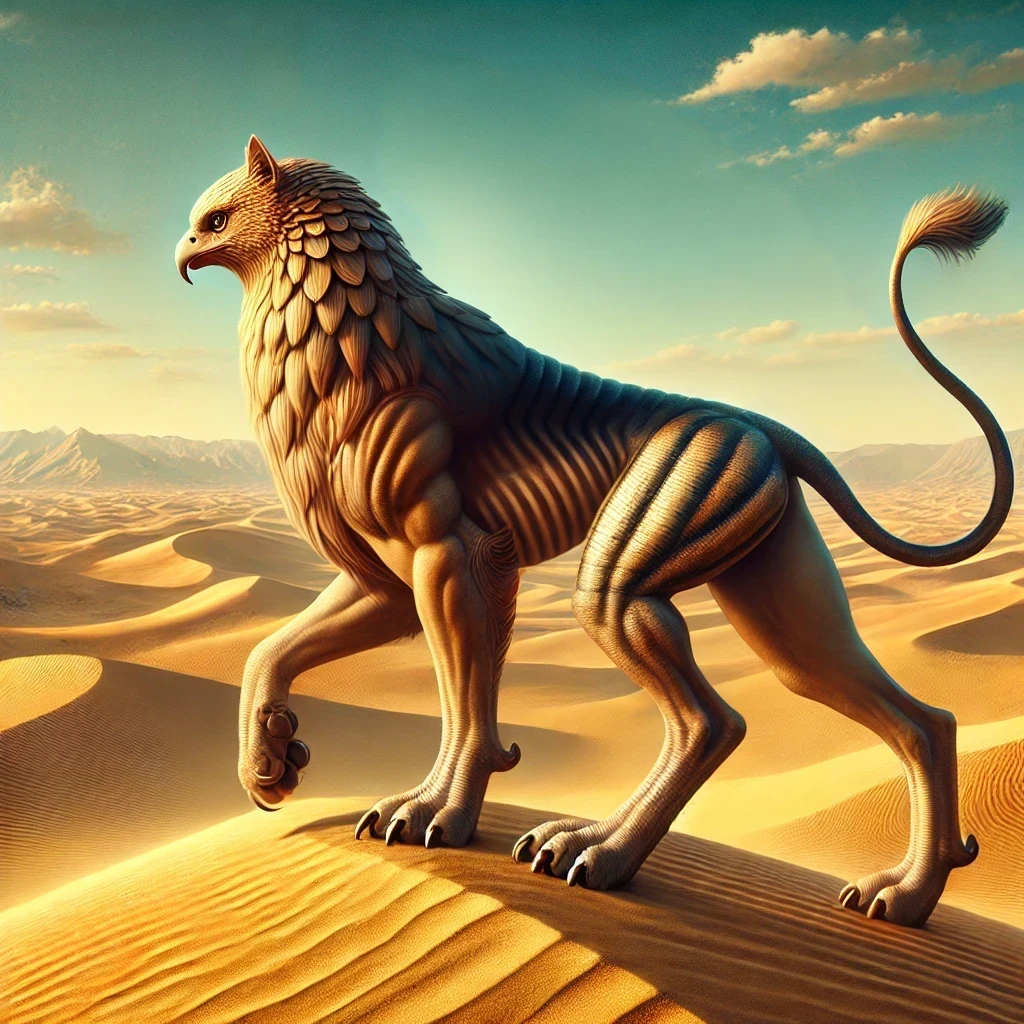Known primarily from the ancient city of Oxyrhynchus, this creature is steeped in mystery and layers of interpretation. Medjed, associated with an elephantfish species, is featured in the Book of the Dead as a supernatural being capable of smiting enemies while remaining unseen.
Origins
The origins of this curious figure trace back to the religious practices of ancient Oxyrhynchus, a city whose name means “sharp-snouted” in Greek, referencing the distinctive elephantfish. Medjed is mentioned in the famed “Book of the Dead,” a guide for navigating the afterlife. Specifically, it appears in Spell 17, where it is described as a mysterious entity that “shoots forth rays” and smites enemies in the dark.
The Oxyrhynchus Connection
Oxyrhynchus was more than just a city; it was a hub for religious devotion, particularly to the elephantfish, revered for its supposed consumption of Osiris’ dismembered body parts. The connection between Medjed and this aquatic species reinforces the city’s sacred identity and its role in preserving unique aspects of Egyptian spirituality.
Historical Textual References
While much of what we know about Medjed comes from the “Book of the Dead,” additional insights are gleaned from temple inscriptions and papyri discovered in Oxyrhynchus. These texts suggest that Medjed may have symbolized an unseen force, aligning with the broader Egyptian theme of hidden divinity and cosmic order.

Appearance
The visual representation of Medjed is as peculiar as the lore surrounding it. Unlike other mythological beings adorned with anthropomorphic features or animalistic grandeur, it’s depictions are strikingly minimalistic.
Unique Characteristics
In artistic renderings, Medjed is often shown as a conical figure, akin to a ghostly shroud, with two protruding eyes. This simplicity is both unsettling and fascinating, contrasting sharply with the elaborate iconography of other Egyptian deities and mythological figures.
Interpretations of Form
Scholars debate whether Medjed’s minimalist form represents its spiritual invisibility or an intentional abstraction meant to evoke its ethereal nature. The lack of intricate detail may have reinforced its enigmatic status, leaving much to the imagination of worshippers and priests alike.
Symbolism
As with many elements of Egyptian mythology, Medjed’s symbolism is layered and multifaceted, bridging the mortal and divine realms in profound ways.
Protector and Punisher
In its role as a smiter of enemies, the creature embodies dual aspects of protection and retribution. This aligns with the Egyptian worldview, where cosmic balance required the vanquishing of chaos and malevolent forces.
Connection to the Afterlife
The inclusion of Medjed in the “Book of the Dead” suggests a role as a guide or protector in the journey to the afterlife. Its association with hidden power and vision aligns with the Egyptian emphasis on spiritual vigilance and preparedness for the challenges of the Duat, the underworld.

Abilities
The lore surrounding Medjed highlights its supernatural abilities, emphasizing its status as an entity of both awe and fear.
Smiter of Enemies
Medjed’s most notable power is its ability to strike down enemies with precision, a characteristic that has inspired comparisons to divine judgment. The description of “shooting forth rays” is often interpreted as a metaphor for its swift and unseen attacks, symbolizing divine retribution.
Invisibility
Another intriguing aspect of Medjed’s abilities is its invisibility. This trait not only underscores its mysterious nature but also serves as a metaphor for the hidden forces that govern the universe.
Tales
The mythos surrounding this creature may be sparse, but its presence in the “Book of the Dead” and other religious texts lends itself to compelling interpretations.
Spell 17: The Mystery of Medjed
In Spell 17 of the “Book of the Dead,” Medjed is described as an enigmatic being whose actions defy easy explanation. Its role in this spell suggests that it acts as both a guardian and a judge, ensuring the protection of the deceased’s soul while also delivering divine punishment to adversaries.
Legends of Oxyrhynchus
Local legends from Oxyrhynchus also elevate Medjed’s stature. Stories describe it as an ever-watchful force that protected the sacred waters and the fish species revered by the city’s inhabitants. These tales often emphasize Medjed’s role in maintaining the sacredness of Oxyrhynchus as a religious center.

Relationships
Medjed’s connections to other figures in Egyptian mythology and its ties to Oxyrhynchus’s religious practices further illuminate its significance.
Association with Osiris
The elephantfish, central to the city’s identity, was believed to have consumed parts of Osiris’ body after he was dismembered by Seth. Medjed’s connection to this fish strengthens its link to the Osirian mythos and themes of death, rebirth, and cosmic order.
Link to Other Protective Deities
It shares traits with other Egyptian deities and entities that serve protective roles, such as Bes and Anubis. Its ability to strike unseen parallels the watchfulness of Bes, while its association with the afterlife recalls Anubis’ guidance of souls.
Trivia
A Modern Icon
Medjed has gained a surprising level of popularity in contemporary Japanese culture, where it is often depicted as a cute, ghost-like character in manga and anime. This modern interpretation highlights its universal appeal as a mysterious and otherworldly being.
The “Hidden One”
The name Medjed itself translates to “The Smiter” or “The One Who is Unknown,” encapsulating its dual nature as both protector and enigma. This linguistic connection underscores the layered symbolism that has captivated audiences for millennia.
Rediscovery at Oxyrhynchus
The discovery of numerous papyri in the ruins of Oxyrhynchus during the late 19th and early 20th centuries reignited interest in Medjed and other figures from the city’s religious life. These texts have provided invaluable context for understanding its role in ancient Egyptian culture.



